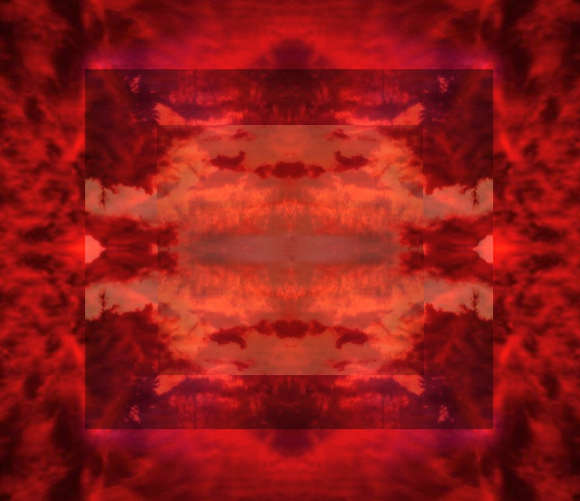In several recent posts, I have discussed Hillman’s distinction between soul-work and spirit-work (doing psychology vs. spiritual development). Hillman claims Jung’s ancestry here (and with good reason), but there are also grave differences in how they understood these notions. And while such differences were carefully made explicit and worked through by Hillman in the case of ‘soul’ (anima, psyche), he doesn’t do as much to clarify his notion of ‘spirit’ and its Jungian counterpart.

But there is a clear tension between what Jung meant by ‘spirit’ and what Hillman writes about it.
1. When we’re reading Jung on spirit, what we’re investigating is the archetype of meaning. It represents the occasional experience (in our personal lives) of a “hidden meaning behind the chaotic events”: in synchronistic phenomena, in sudden helpful ideas, in dreams (or fairy tales) where a Wise Old Man appears and gives benevolent directions towards a solution. Especially the latter kind is what Jung describes phenomenologically in the spirit essay, and what leads him to think that the Wise Old Man personifies spirit. But spirit, even in the spirit essay, is a powerful archetype quite apart from the personification in which it appears. In the synchronicities essay, it is theorized as a world-ordering principle on a par with causality. In the second of the Two Essays (and in Psychology & Alchemy) it appears under the name of the “mana personality”, i.e. the figure of a magician who has captured the psychological energy of the unconscious.
2. In contrast, when reading Hillman (especially on the senex/puer archetype), ‘spirit’ stands synonymously for “the transcendental”: what is beyond “the space-time continuum which we call ‘reality’” (UE 3, 45). This is a much more narrow definition. Based on this, it is clear why for Hillman spiritual practice does not count as psychology (soul-work); but we have to be aware that it is much more restrictive than Jung’s view (who thought that there was a valid psychological interpretation of theological notions, and whose notion of the “individuation process” with its approximation to the Self can easily be seen as a spiritual quest that is, at the same time, recognizably soul-work).
Spirit, for Hillman, is what the puer reaches for; the puer, in fact, is defined more or less as the archetypal aspect that reaches for the transcendental. And one weakness in Hillman’s construction of a senex-puer axis is the blatant asymmetry between the broadly defined and wide-reaching senex complex and the meagre one-trick aspect of the puer. It is hard to see how these two poles could be balanced. Perhaps the fondness of the psychoanalytic tradition for the puer is at fault here, having given it a disproportionate place. It certainly cannot carry the fullness of spirituality, though; and since in Hillman’s system, spirit is merely what the puer reaches for, the result is that he has relegated spirit to a blind spot location. Because of this one-dimensional definition as what is reflected in the puer, Hillman’s “spirit” is so bland compared to Jung’s notion. Many of the aspects that Jung can easily assign to spirit (Geist) are blocked out of Hillman’s notion, because for him, they would have to be part of the senex, not the puer, and the senex, by Hillman’s definition, has nothing to do with spirit. Thus whenever some characteristic suggests “senex” to Hillman (and many characteristics do that), then by definition it can no longer be spiritual, as the spiritual does not belong to the senex, but to the puer. And since many aspects of the spiritual (broadly defined) simply make no sense in puer contexts (viz. Jung’s Wise Old Man appearing in a fairy tale with helpful directions, or the powerful magician claiming the anima’s mana), Hillman is blocked from understanding them as spirit phenomenology at all.
Moreover, in Hillman the language that evokes the spiritual routinely combines the “reach for the transcendental” with the fashionable pop spirituality of his time. Thus “we seek spiritual guidance for psychological tangles, confusing psychotherapy with yoga, and the analyst with the master. […] in spiritual disciplines […] the vale of the world is transcended through retreat, meditation, and prayer.” (MA 26; also cf. RVP 67.) When Hillman talks about spirit, there is typically mention of yoga, Zen masters, and the like. This reflects of course the time of the writing of many of the works I have quoted (i.e., RVP, MA, the senex/puer essay, and “Peaks and Vales”, too) in the 1960s and 70s, and may have simply to do with a pressing concern for delimiting psychotherapy and archetypal psychology against these fashionable spiritual movements. But it also cements the rather narrow notion of spirit that just “lifts, aiming for detachment and transcendence” (MA 27).
Whereas Hillman’s work on soul and the anima are an expansion, enrichment, and deepening of Jung’s work on these topics, things are the other way round when spirit is concerned: there, Hillman’s views are impoverishing our notions, making them one-dimensional and clichéd. Part of our task, then, should be a recovery of Jung’s notion of spirit, along lines similar to those on which Hillman had recovered the notion of soul. (Compare what he says in Anima, 13, about disentangling the notion of the anima from its initial descriptions in psychoanalytic phenomenomlogy, “relative to the dominants of the culture and the Zeitgeist”.) Perhaps we, too, need a more technical notion to supplement “spirit”, just as we needed the more technical notion of anima to supplement that of “soul”.



